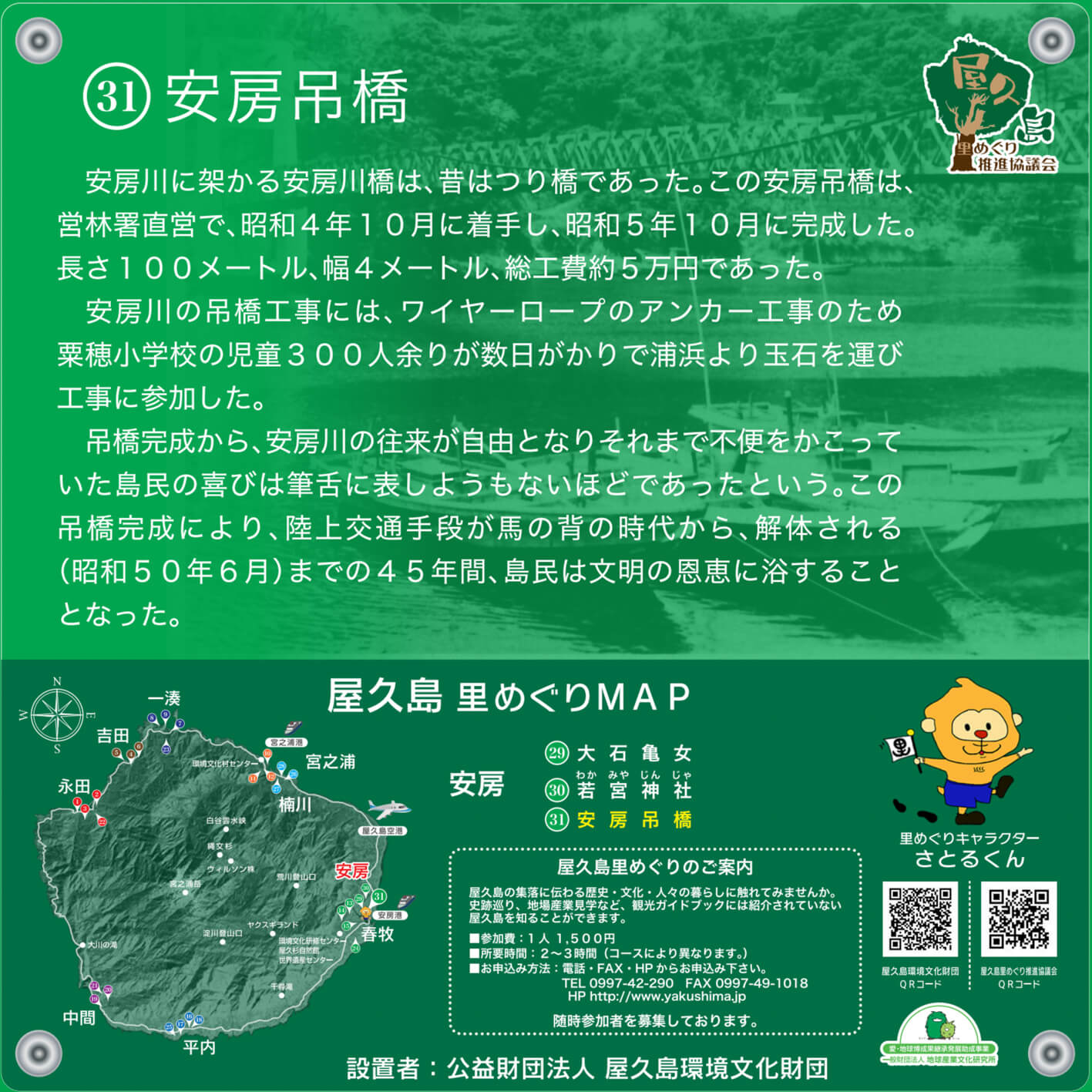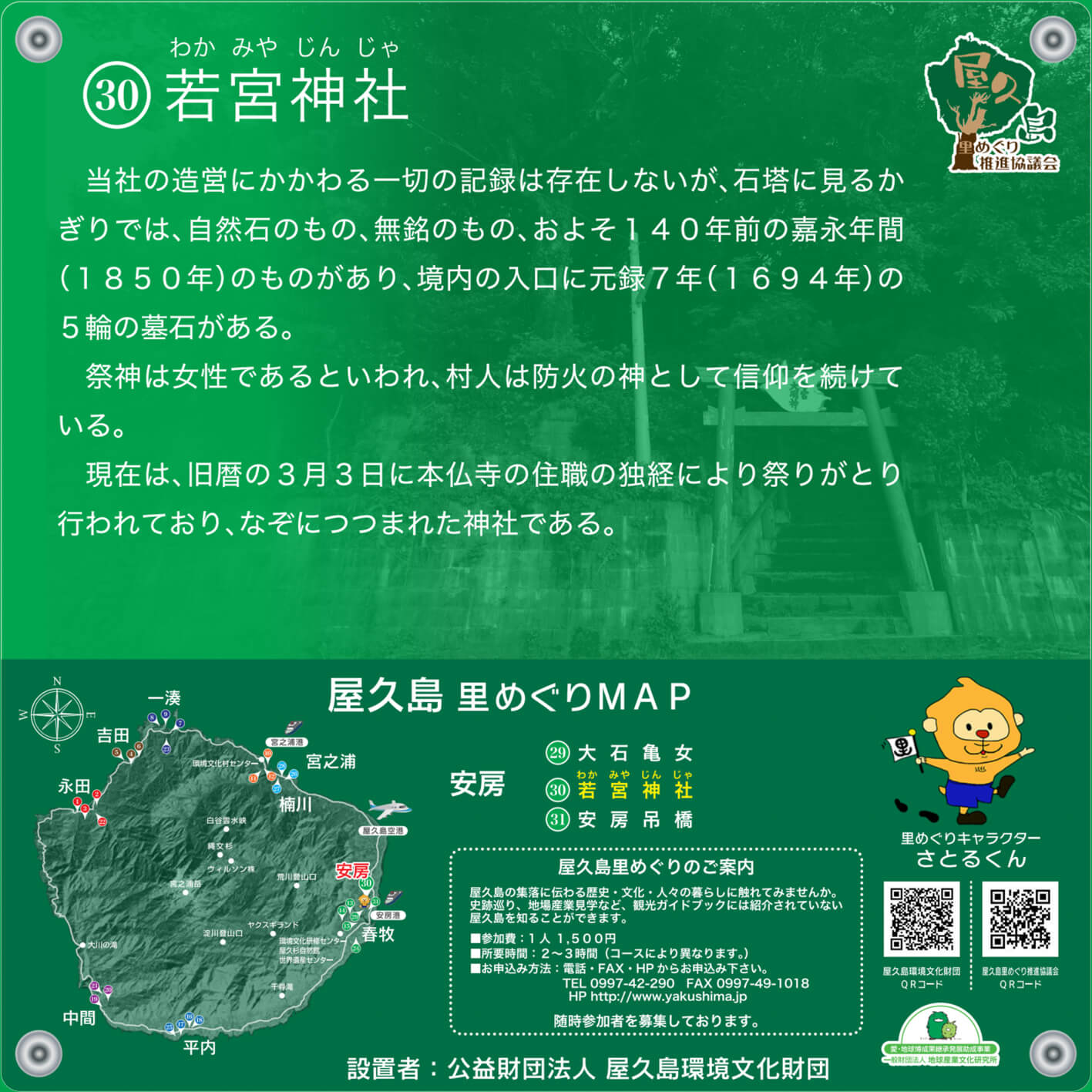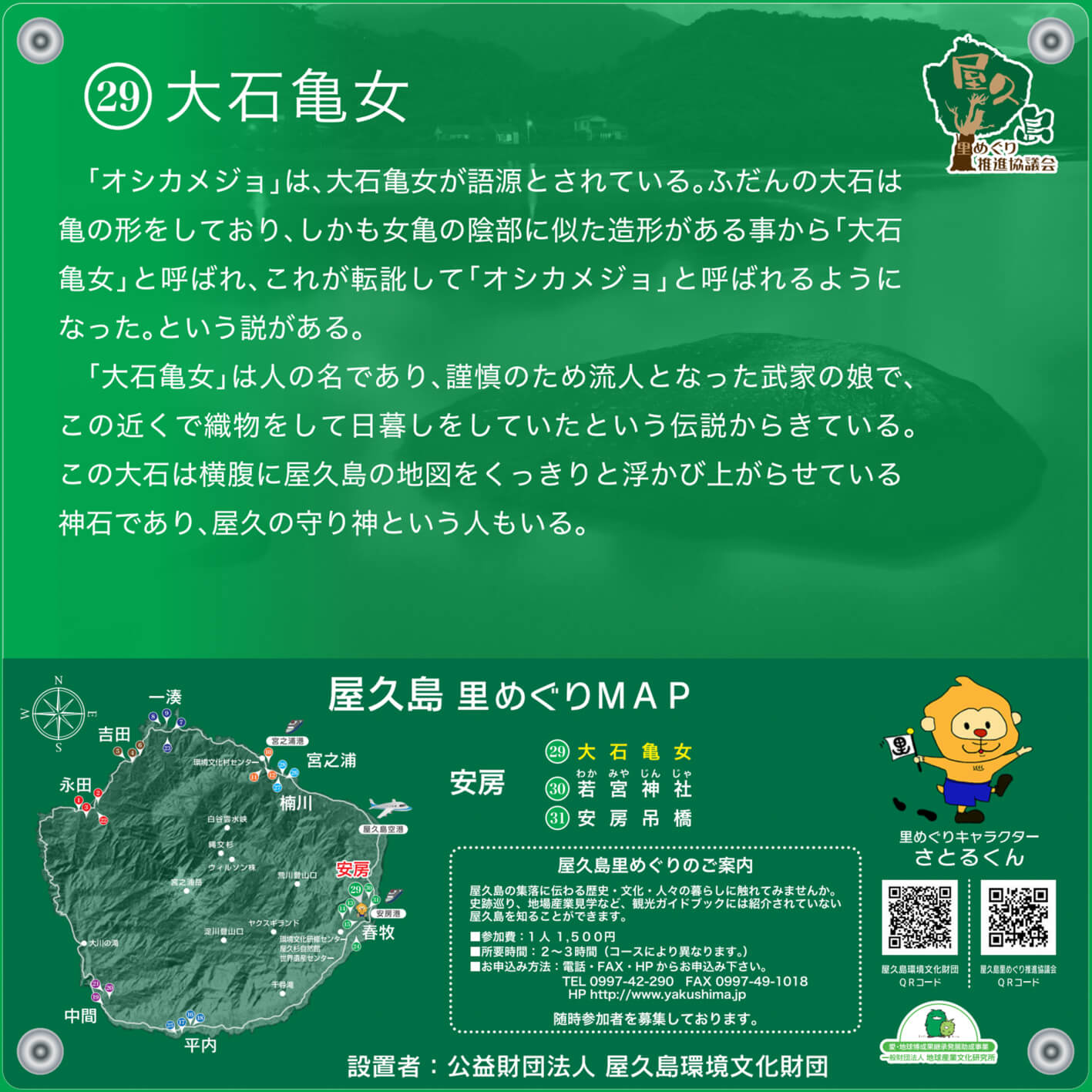anbou
Anbo Suspension Bridge
- Modification: 2024/01/10
- Area: anbou
The bridge spanning Anbo River used to be of the suspension variety. That suspension bridge was managed by the local forest service office. Its construction began in October of 1929 (Shōwa 4), and it was completed exactly one year later. It was 100 meters in length, four meters in width, and was built at a cost of just 50,000 yen (approx. 500 USD), which would be about 38 million yen in today’s money (approx. 327,000 USD) (Public Records, Bank of Japan. 2020).
To help make the anchor for the wire rope used during the bridge’s construction, about 300 students from Awaho Elementary School were recruited to gather rocks and stones from the nearby Urahama beach.
Upon completion of this bridge, traffic to, from, and through Anbo became much, much more simple and free for the residents of Yakushima, whose resulting happiness was almost beyond description. From the horseback times of its completion until its demolition in June of 1975 (Shōwa 50), this bridge graced Anbo as a symbol of technological and infrastructural advancement for 45 long years.

Wakamiya Shrine
- Modification: 2024/01/10
- Area: anbou
Records relating to the construction of this shrine do not exist at all. However, using the shrine’s various stone monuments—which are all unhewn natural stone without markings or engravings, the shrine has been roughly dated to the Kaiei era, which began in 1850. Furthermore, a stone gorintō pagoda* dated to 1694 (Genroku 7) stands on the shrine grounds.
The god enshrined here is said to be a feminine one, and has been venerated as a protector against fires. Furthermore, an event is held here on the third day of the third month of the old lunar calendar in which a monk from Honbutsu Temple reads Buddhist sutras.
*For more information on gorintō, see plaque #90 in Shitogo Village.

Oshikamejo
- Modification: 2024/01/10
- Area: anbou
“Oshikamejo” is written with four kanji: large, stone, turtle, woman; normally. This large stone was thought to bear a striking resemblance to a turtle—even a female turtle’s reproductive bits. Hence its name, which was originally read as “Ōishikamejo,” which, over time, changed to “Oshikamejo.”
“Oshikamejo” is also the name of a person—long ago, a daughter of a samurai family went into a penitent exile on Yakushima, where she spent her days weaving in a house nearby. In addition to its testudinal likeness, the shape of Yakushima is also visible on the side of this large stone. As such, it has long been thought of as sacred, a protective spirit for the people of the island.

〒891-4205
鹿児島県熊毛郡屋久島町宮之浦823番地1
TEL:0997-42-2900
FAX:0997-49-1018
(屋久島環境文化村センター内)













